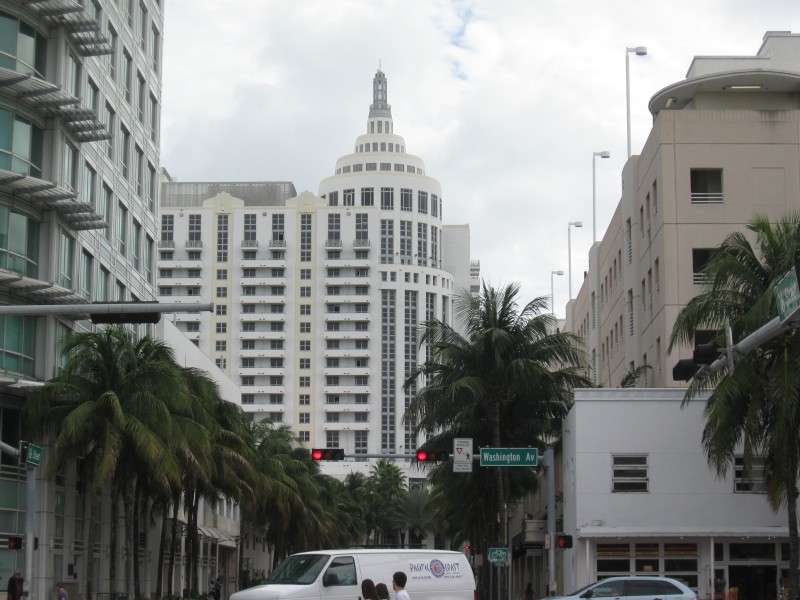South Beach is the southernmost neighborhood in Miami Beach, and is at the southern tip of the long barrier island that Miami Beach shares with Surfside and Bal Harbour.
Miami Beach was initially settled in the 1880s as a coconut farm by two entrepreneurs. Avocado farming took place on the barrier island throughout the 1890s and into the 20th century.
South Beach was developed beginning in early 1900s, when its potential as a beach resort was seen by landowners on the barrier island. Plans were underway at around 1910, with bathhouses, the first hotel, and a wooden causeway bridge to the island built by 1915. In the 1920s, grand hotels were built for wealthy industrialists from the North, and these rich families were encouraged to build their winter homes in Miami Beach.
The Miami hurricane of 1926 only temporarily inhibited the growth in the city. After the stock market crash of 1929, Miami Beach continued to grow, attracting the elite from the Northeast and Midwest through effective advertising in newspapers during the winter of women in bathing suits frolicking in the warm sun. During the 1930s, Art Deco became the architectural style of choice, replacing Mediterranean Revival and others. This Art Deco would become the lasting signature of Miami Beach, particularly South Beach.
The 1950s and 1960s saw continued growth in Miami Beach, but mainly in other neighborhoods. Miami Modern and International styles replaced the Art Deco of South Beach. By the 1970s, South Beach appeared to have reached the end of its life as a resort destination, and crime and abandonment creeped into the neighborhood. The neighborhood was saved in the 1990s by Barbara Capitman, who envisioned the Art Deco hotels along Ocean Drive and surrounding streets as a resort destination once again. Today, South Beach is thriving as a popular destination, especially for young, aflluent people.
The main draw of Miami Beach for decades has been the ocean. The teal water is warm and inviting even in the coldest months of winter.
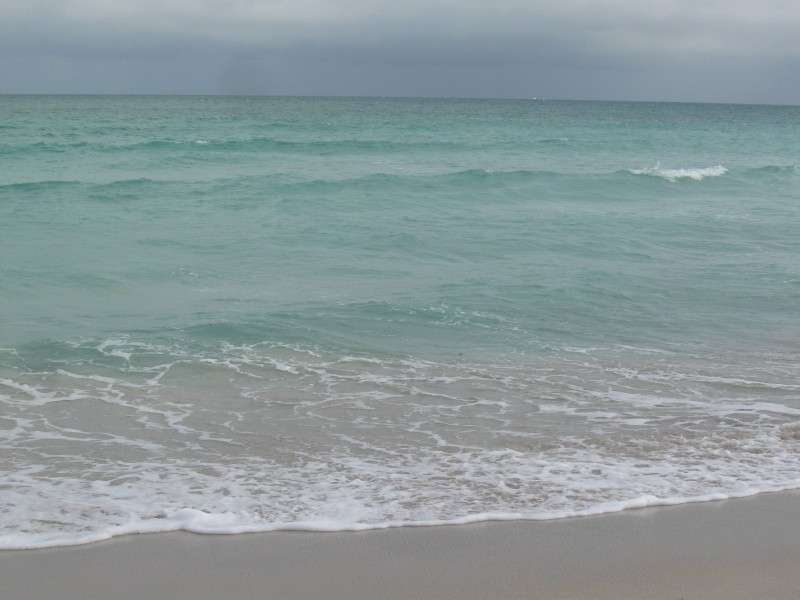
It was this warm water and weather that enticed deveelopers to open beach casinos and bath houses at the turn of the 20th century.
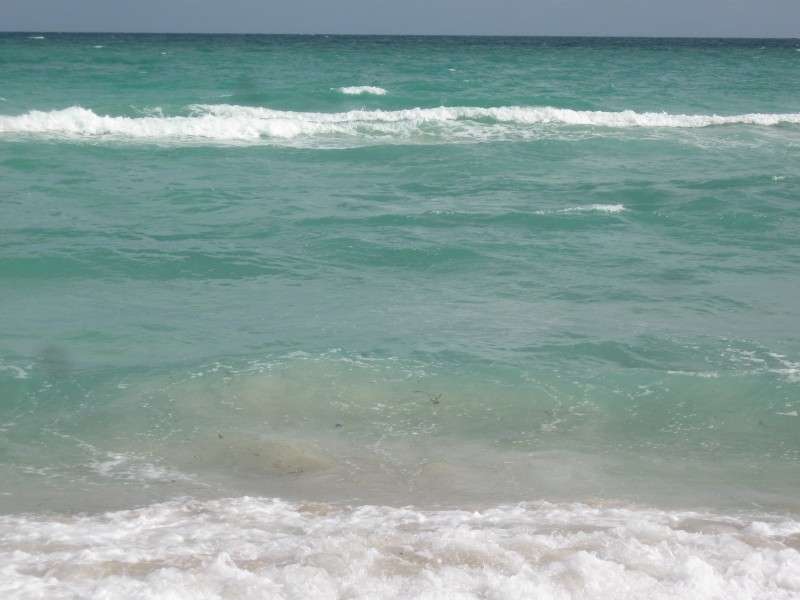
With the Port of Miami so close, it is common to see container ships leaving or heading to the Port of Miami, located south of Miami Beach.
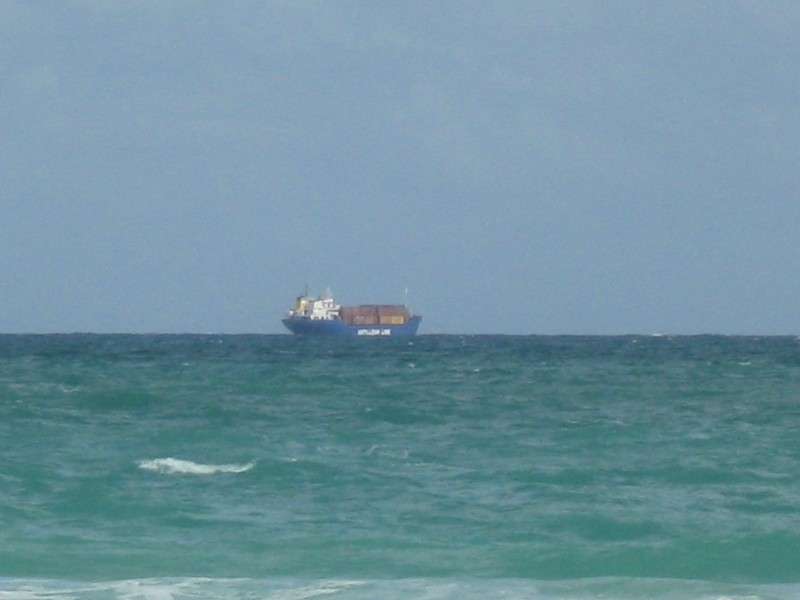
Looking north from Lummus Park. The buildings from the north end of the park to the Mid Beach neighborhood can be seen, with the 386-foot Setai Hotel and Residences in the center.
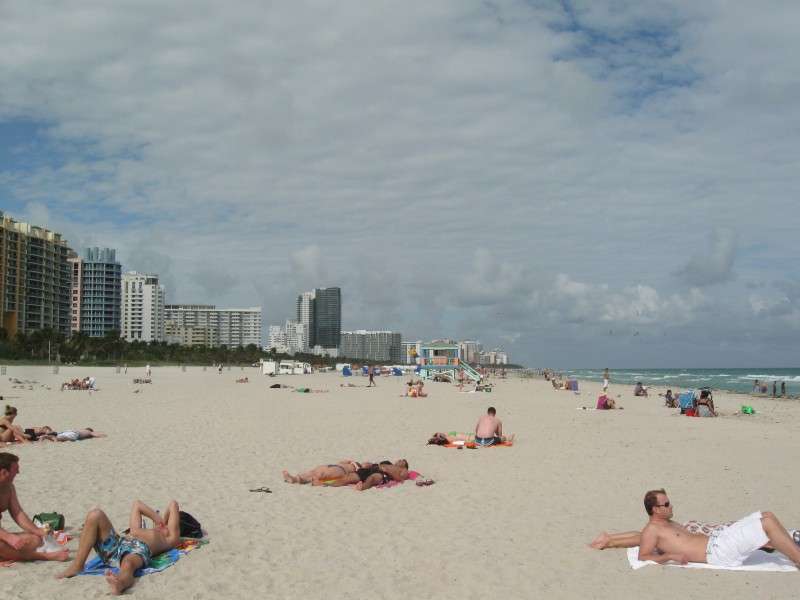
Highrises of Mid Beach from the northern end of the South Beach neighborhood.
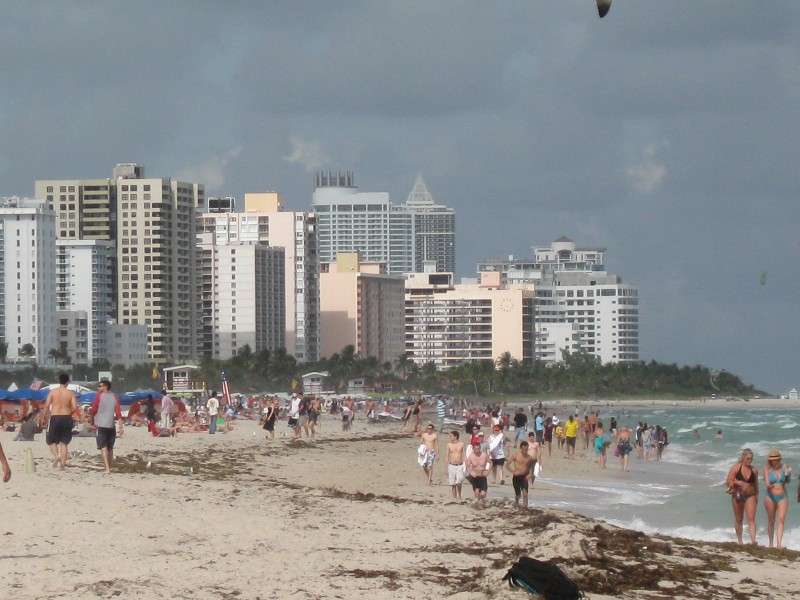
The lifeguard stands in South Beach feature many bright or pastel colors that match the colors of the hotels on Ocean Drive.
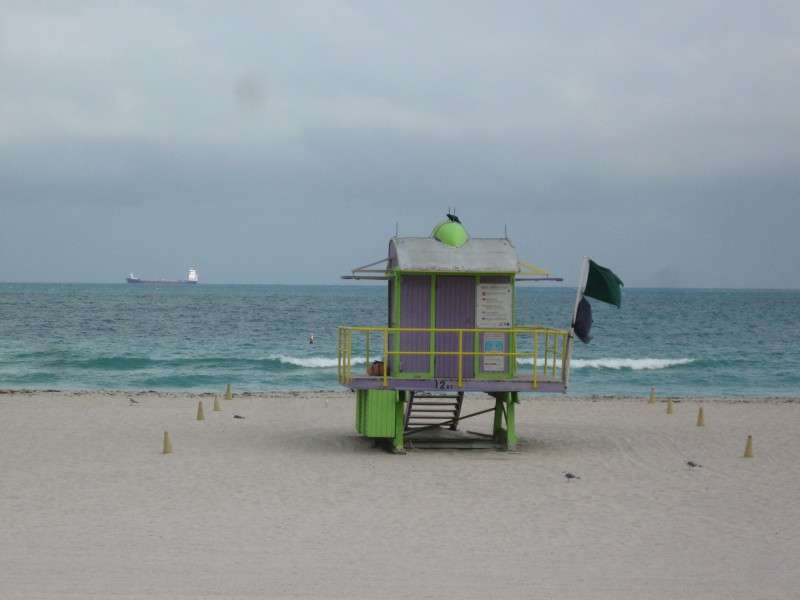
The warm weather allows palm trees to grow everywhere, and provides summer temperatures all year.

Palm trees are scattered throughout Lummus Park, which fronts the ocean and is along Ocean Drive.
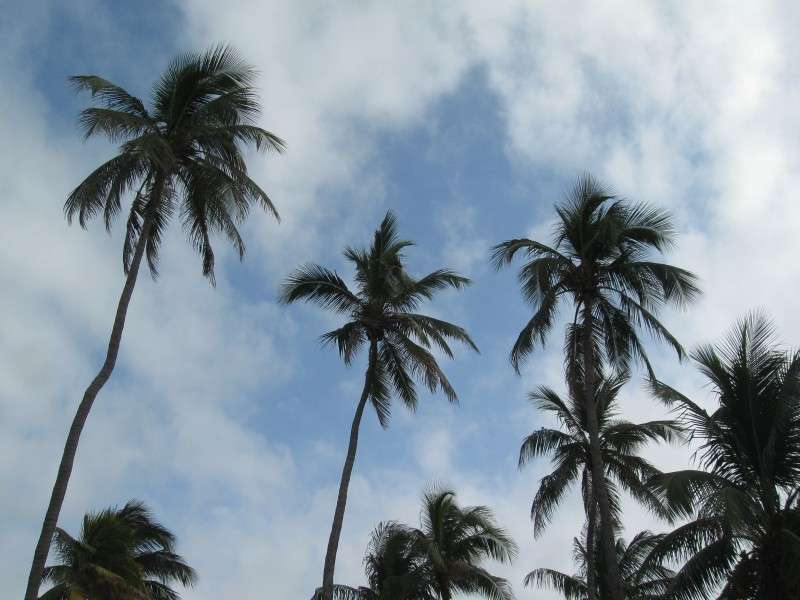
The Art Deco Welcome Center, at 1001 Ocean Drive, along the beach. The welcome center was originally the Oceanfront Auditorium. The structure was built in the 1950s.

The Ocean Five Hotel, at 436 Ocean Drive. The hotel was built in 1939. On the right is the old Surf Hotel, built in 1936.

Farther down Ocean Drive is the southern end of South Beach. This stretch of the road, which doesn't front Lummus Park and the beach, is much quieter and more overlooked than the tourist areas a few blocks north.

A neo-Art Deco building at 5th Street and Ocean Drive.

The Barbizon Beach Club condominium, at 530 Ocean Drive. The former hotel was built in 1937.
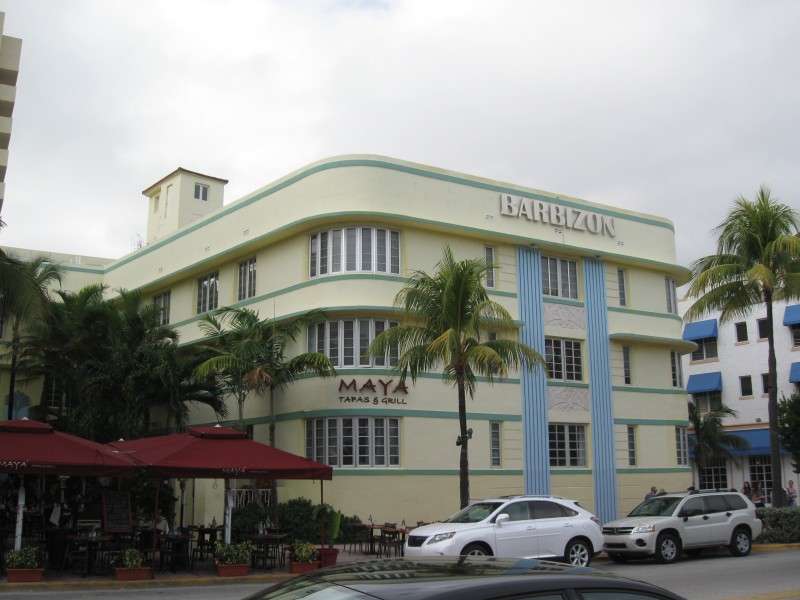
Looking up Ocean Drive from near 6th Street.
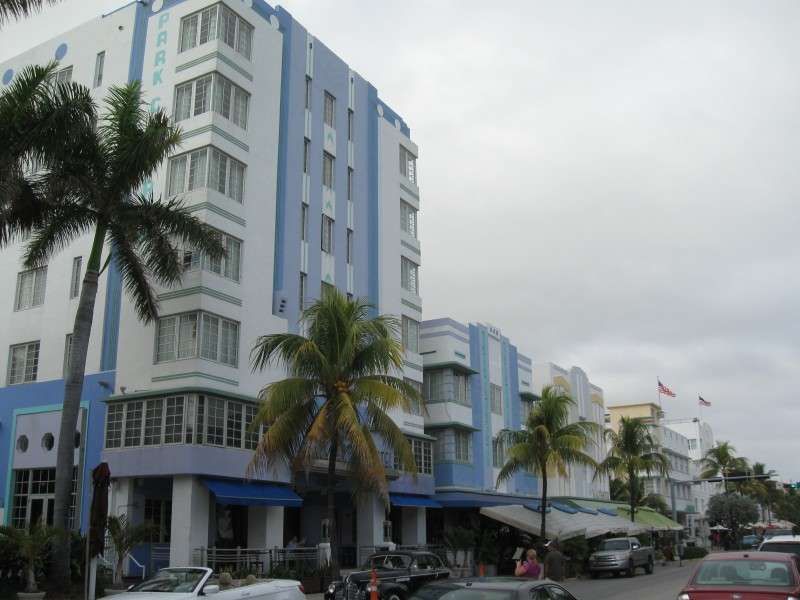
The Park Central Hotel, at 640 Ocean Drive. The hotel was built in 1937.

The Majestic Hotel, at 660 Ocean Drive. The hotel was built in 1940 in the Vienna Succession style.
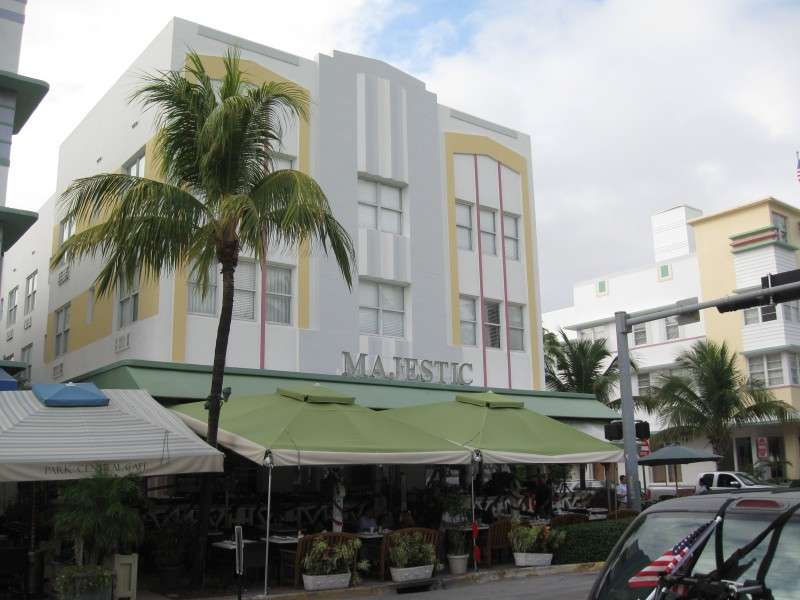
The Avalon Hotel, at 700 Ocean Drive. The hotel was built in 1941.
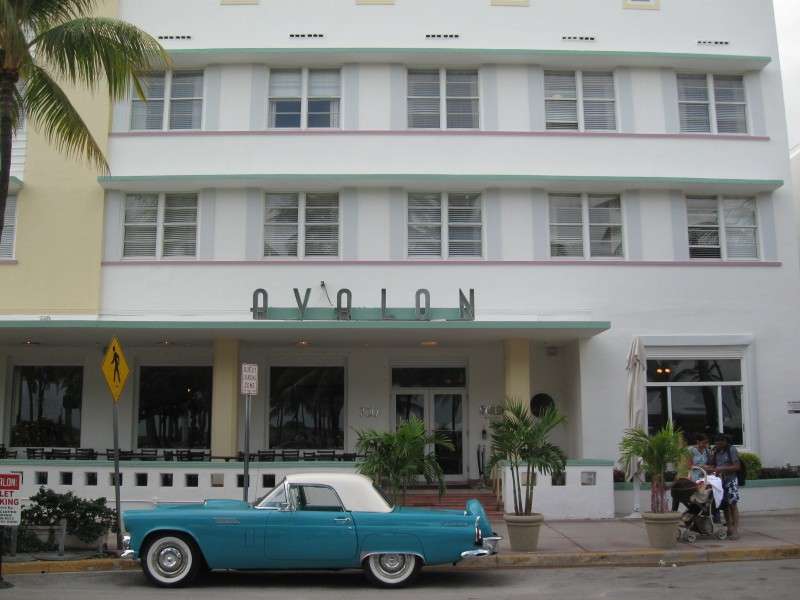
The Colony Hotel, at 736 Ocean Drive. The hotel was built in 1935.

The Boulevard Hotel, at 740 Ocean Drive. The Miami Modern hotel was built in 1950.

The Starlite Hotel, at 750 Ocean Drive. The hotel was built in 1974.

The Colony, Boulevard, and Starlite are regularly selected as quintessential South Beach hotels to photograph at night.
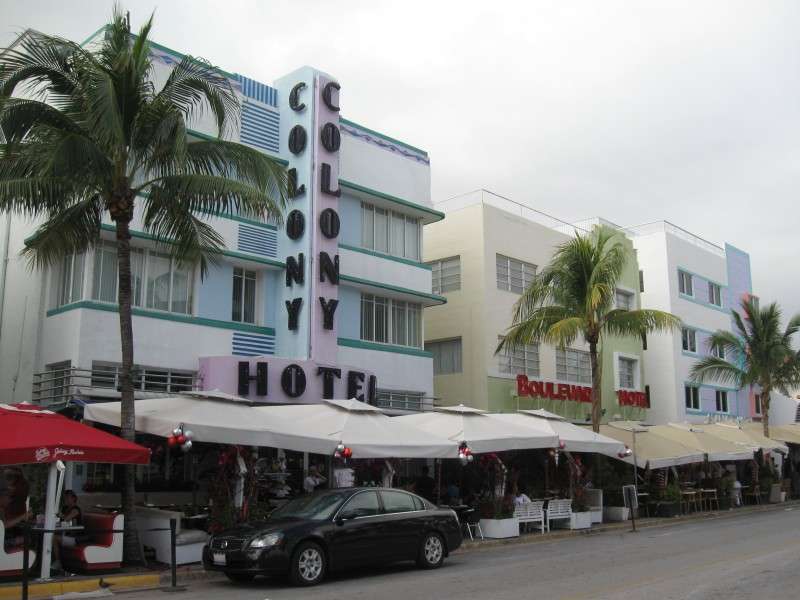
The Pelican Hotel, at 826 Ocean Drive. The hotel was built in 1939.
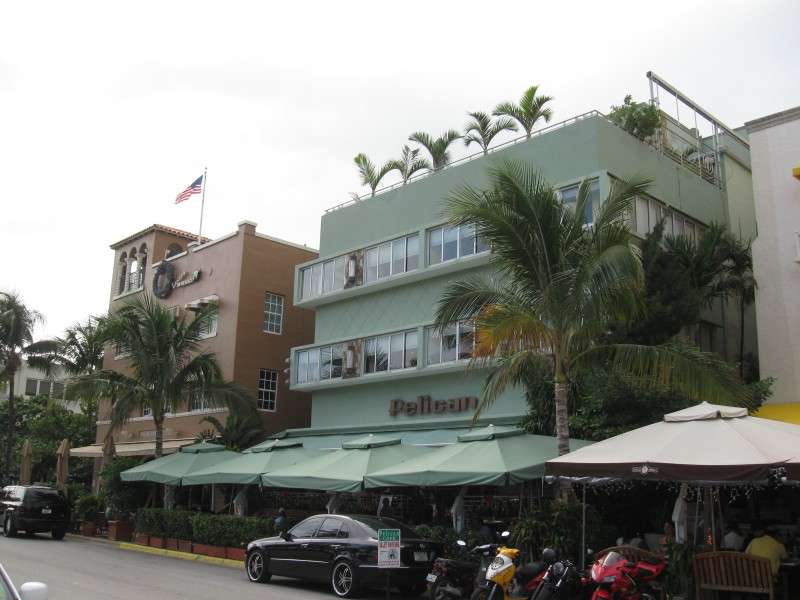
The Waldorf Towers, at 860 Ocean Drive. The hotel was built in 1937, and the distinctive tower was rebuilt in 1985 after being dismantled years earlier.
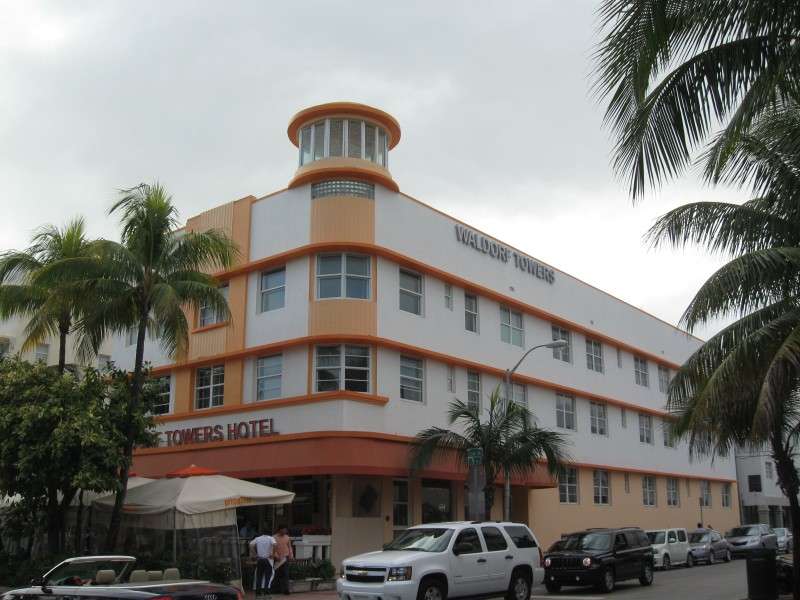
Buildings on Ocean Drive. The Locust, on the right at 918 Ocean Drive, was built in 1926 in the Venetian Gothic and Mediterranean Revival style. On the left is Mango's Tropical Cafe, opened in 1991.

The Breakwater Hotel, at 940 Ocean Drive. The hotel was built in 1939.
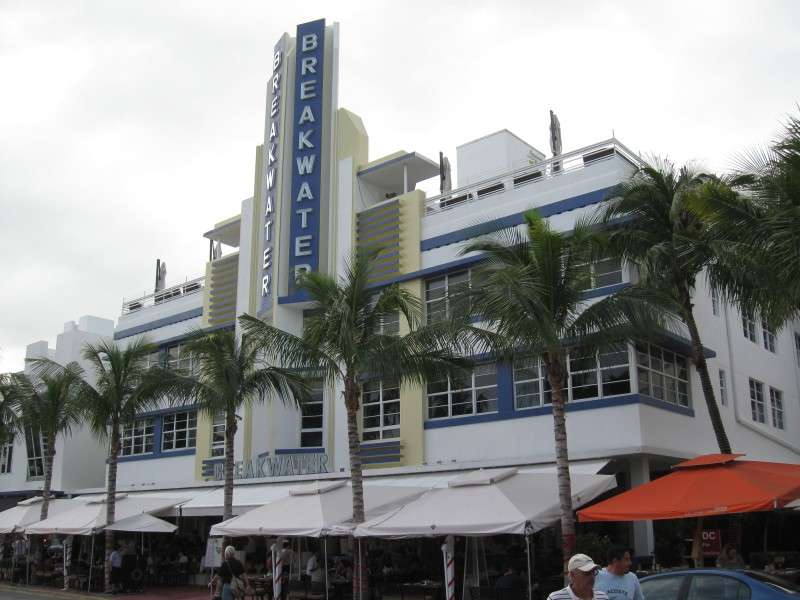
The Edison Hotel, at 960 Ocean Drive. The hotel was built in 1935. The Edison is noteworthy for being in the Mediterranean Revival style, which had already given way to Art Deco by the time the hotel was built.

The Clevelander Hotel, at 1020 Ocean Drive. The original part of the hotel, on the right, was built in 1937.
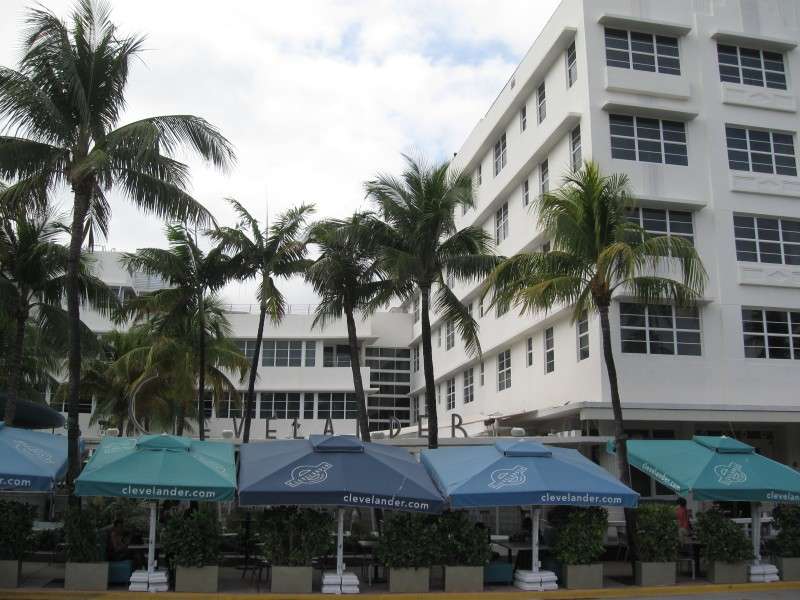
The Clevelander is arguably Ocean Drive's most prestigious hotel, with lavish pool and rooftop parties held throughout the year.
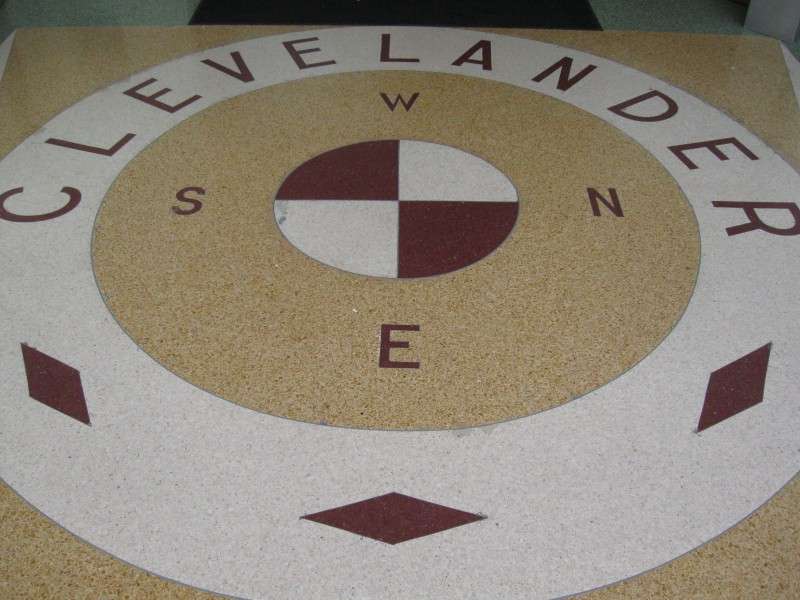
When the Clevelander was renovated and expanded in 1951, the Miami Modern architectural style was used in the additions.
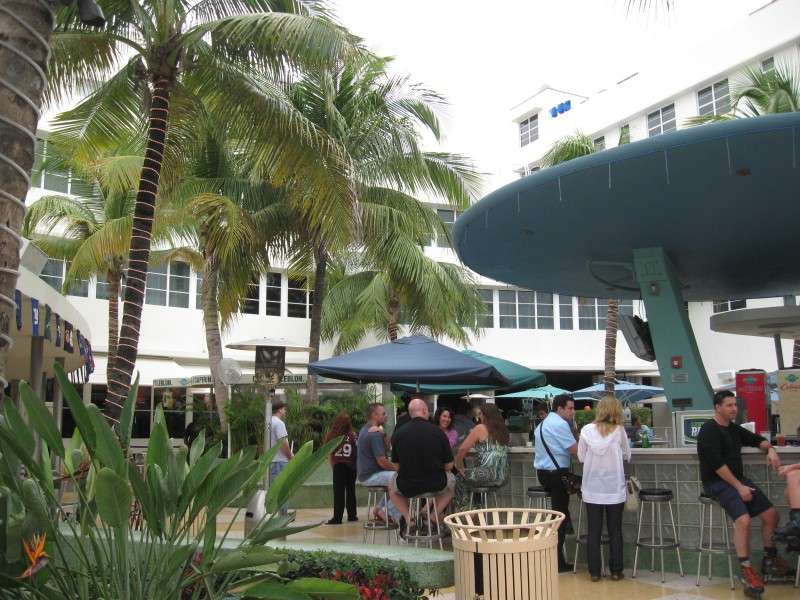
Despite being almost 80 years old, with a renovation and addition that's over 60 years old, the Clevelander has a contemporary interior.
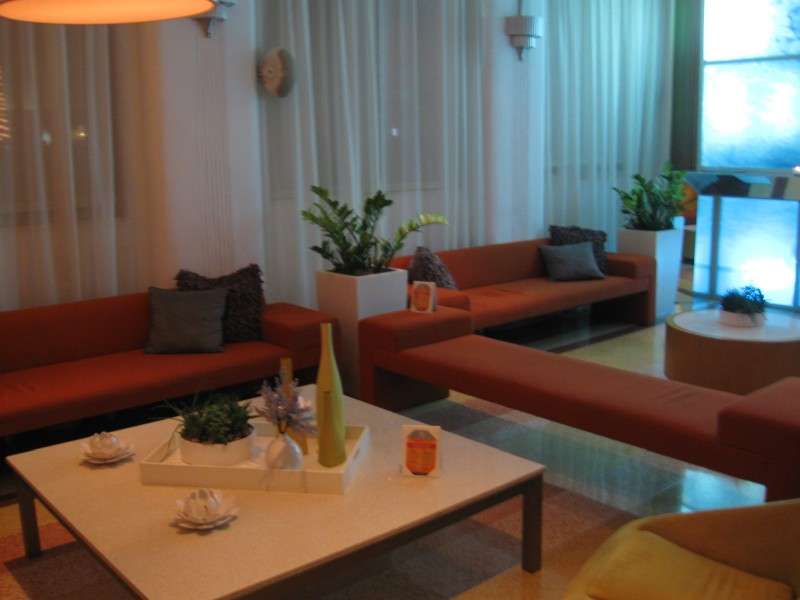
Buildings on Ocean Drive. In the center is the Congress Hotel, built in 1936. The Congress is surrounded by modern buildings, meant to blend in with the Art Deco architecture of the neighborhood, and are condominiums.
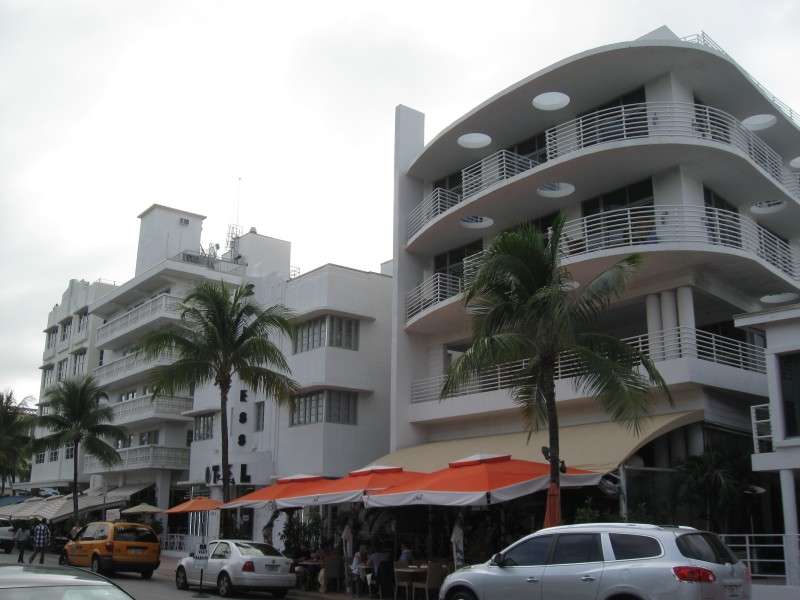
The old Bon Air Hotel, at 1060 Ocean Drive. The hotel was built 1934 in the Mediterranean Revival style.

Casa Casuarina, at 1114 Ocean Drive. The house was built in 1930.
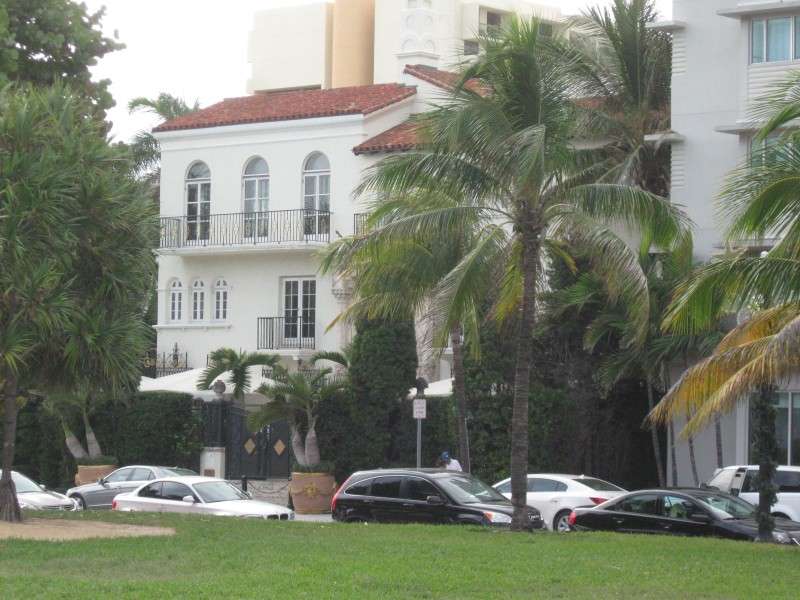
The house, also known as Amsterdam Palace, was the home of Gianni Versace. Versace was killed on the front steps in 1997.

The Tides Hotel, at 1220 Ocean Drive. The hotel was built in 1936. The Tides was the tallest building in Miami Beach when completed, until 1938.
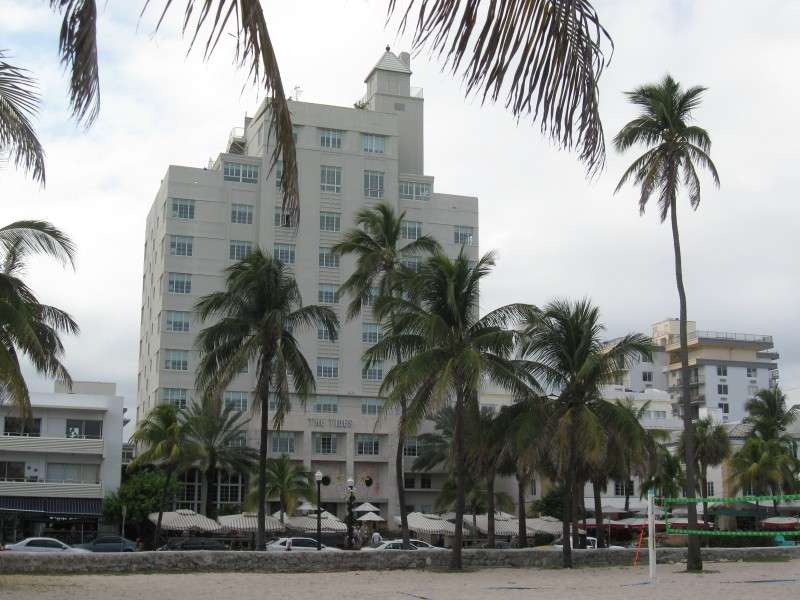
The Leslie Hotel, at 1244 Ocean Drive. The hotel was built in 1937. The Leslie is one of many hotels named for architects' daughters.
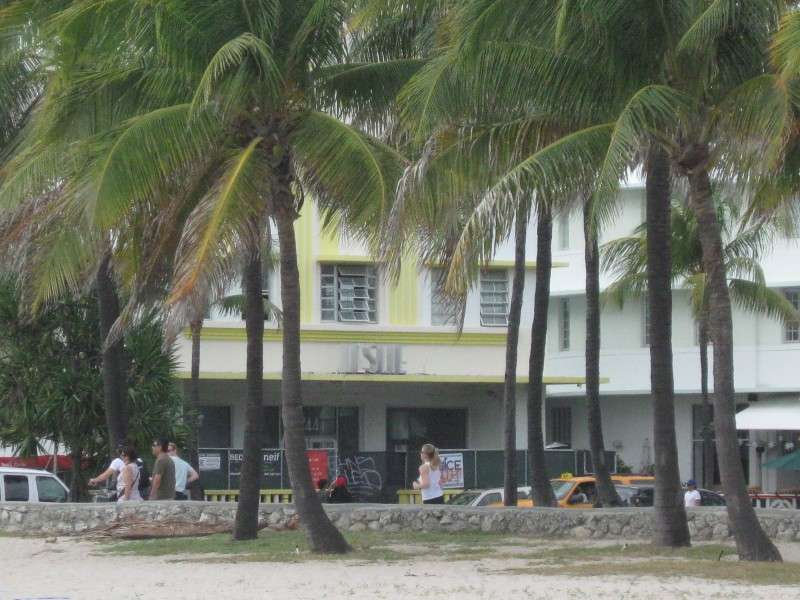
The Carlyle Hotel, at 1250 Ocean Drive. The hotel was built in 1941.
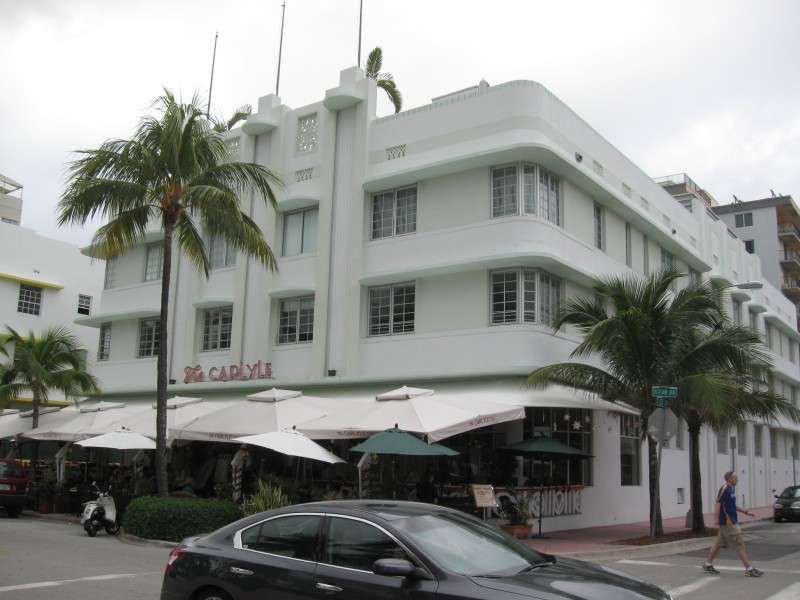
The Leslie and Carlyle Hotels, on Ocean Drive.
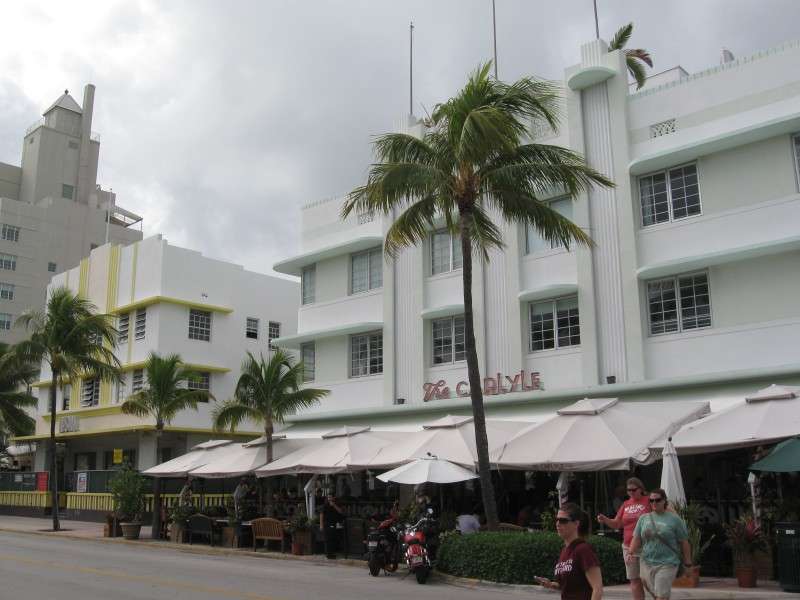
The Cardozo Hotel, at 1300 Ocean Drive. The hotel was built in 1939.
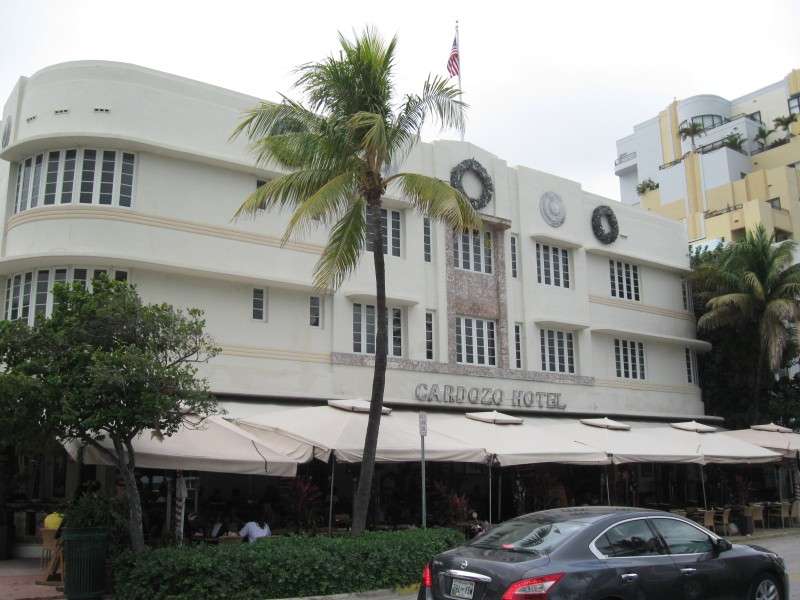
The Cavalier Hotel, at 1320 Ocean Drive. The hotel was built in 1936.
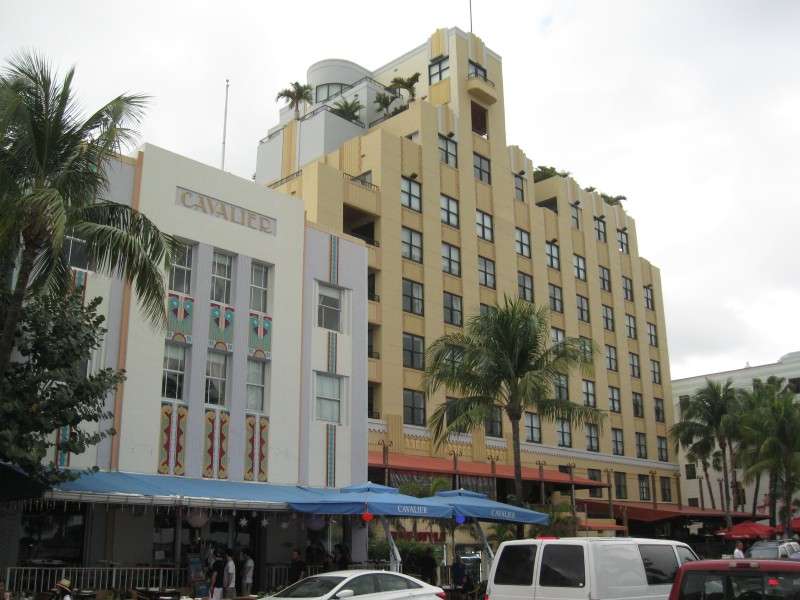
The Winter Haven Hotel, at 1400 Ocean Drive. The hotel was built in 1939.
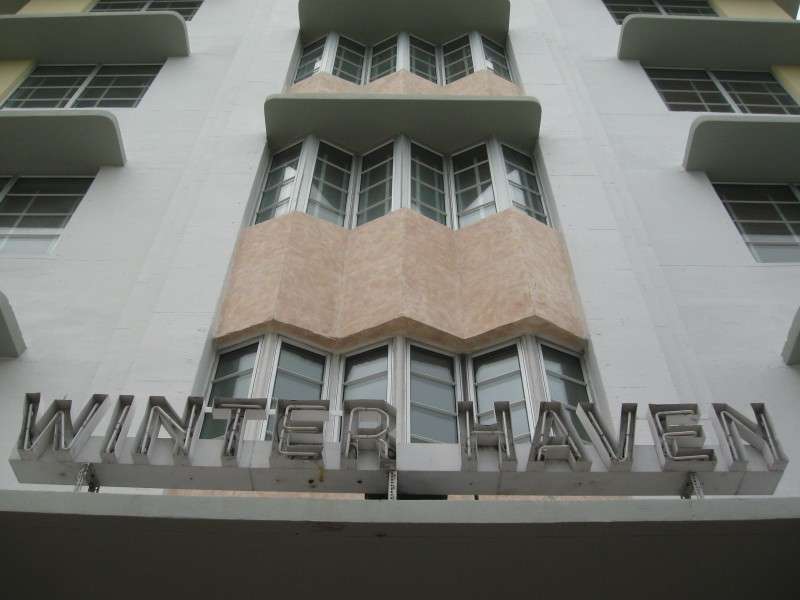
The Crescent Hotel, at 1420 Ocean Drive. The hotel was built in 1932.

A Mediterranean Revival condominium, on Ocean Drive. The structure was built in 1935.
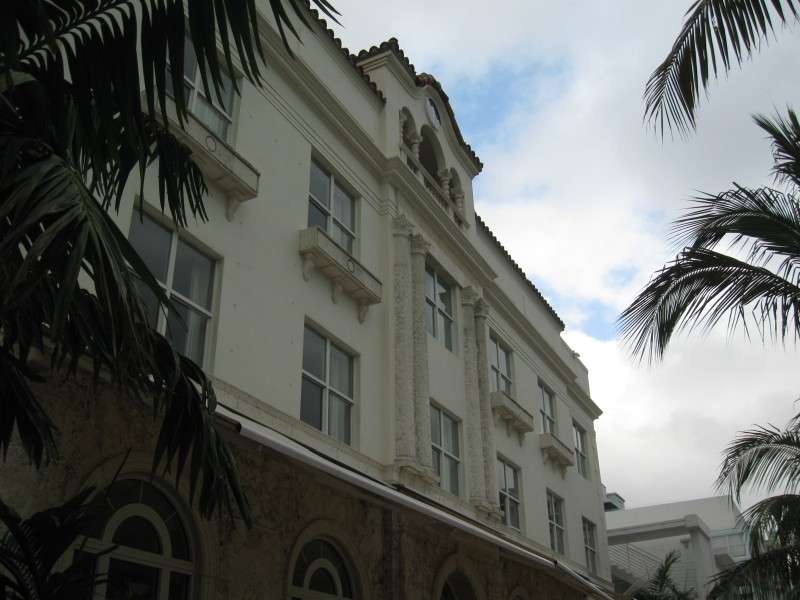
La Sandwicherie, on 14th Street. The restaurant opened in 1988.
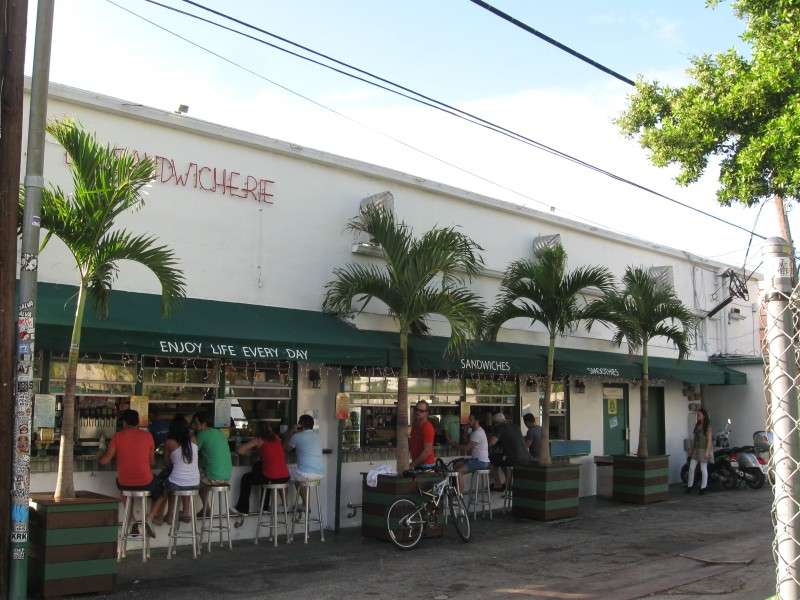
The Fairwind Hotel, on Collins Avenue. The hotel was built in 1936, and was originally the Fairmont Hotel.

Buildings on Collins Avenue. At the end of the block is the Stardust Hotel, built in 1958. The buildings in the center were built in 1934.
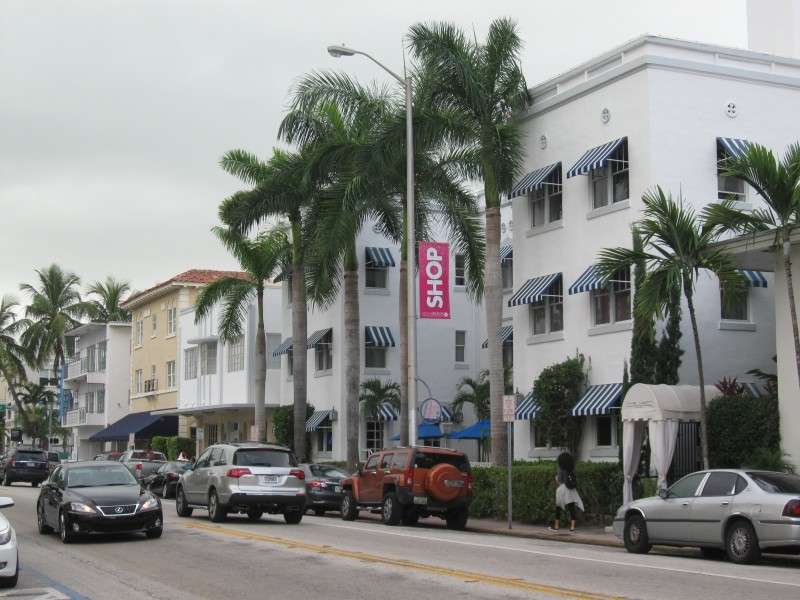
The Essex House Hotel, at 1001 Collins Avenue. The hotel was built in 1941 in the Nautical Moderne style.
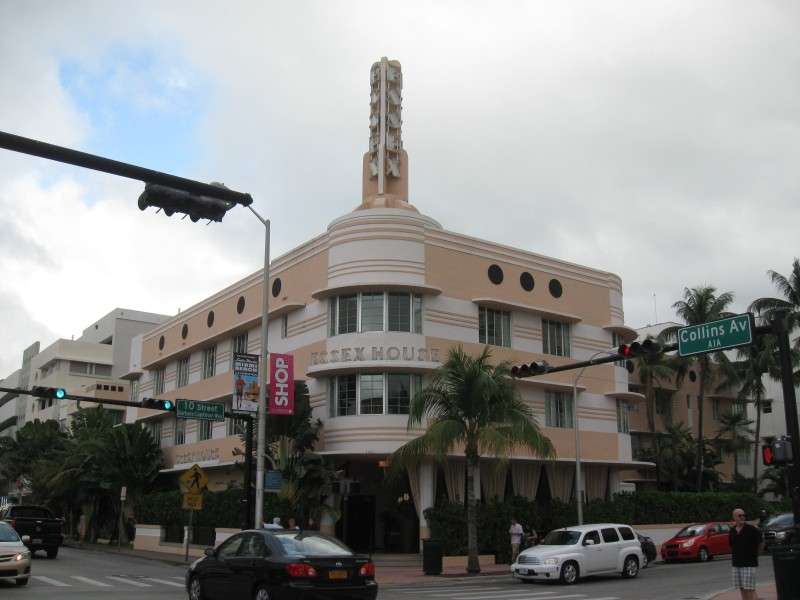
Hotels on Collins Avenue. The Kent Hotel, on the left, was built in 1939. The Palmer House Hotel, on the right, was also built in 1939.
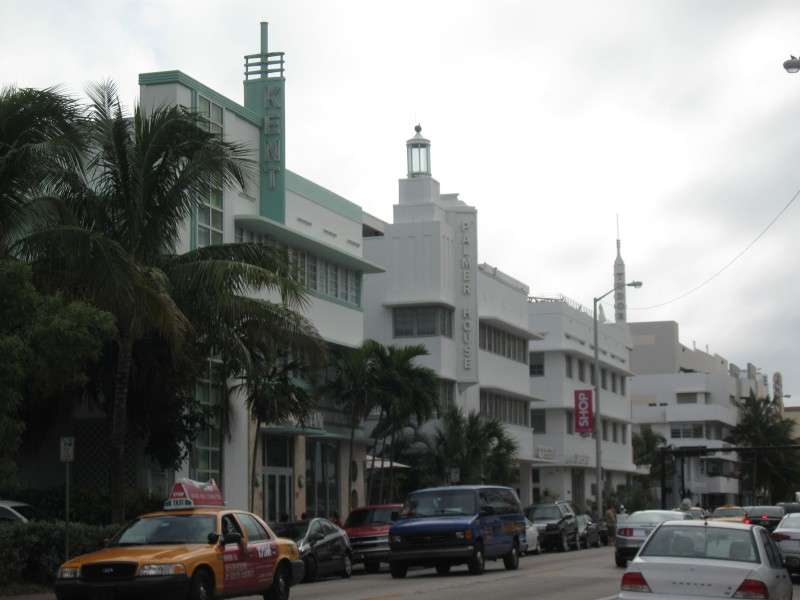
The Marlin Hotel, at 1200 Collins Avenue. The hotel was built in 1939.

Hotels on Collins Avenue. The Geneva Hotel, on the left, was built in 1952, and the Tropics Hotel, on the right, was built in 1941.
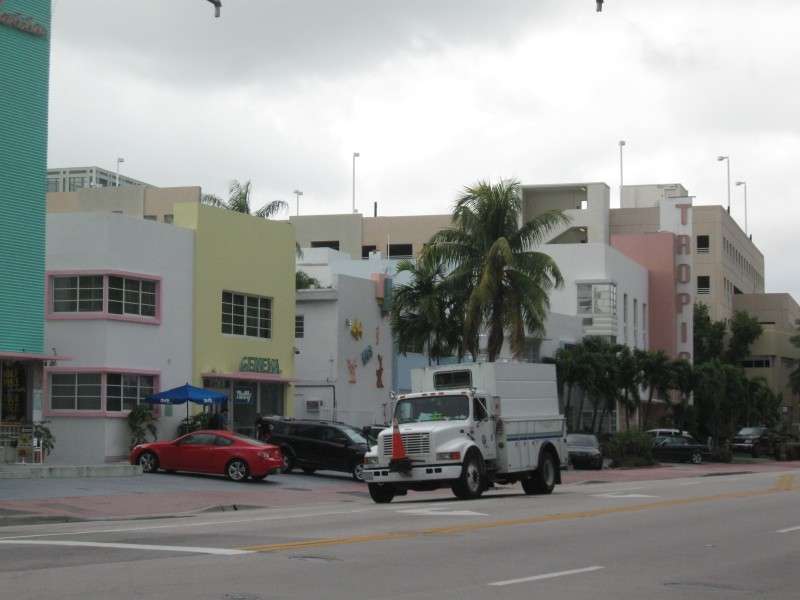
Looking down 8th Street at the Blackstone Hotel, on Washington Avenue. The hotel was built in 1929 and was a frequent place of lodging for Jewish people. The hotel is 13 stories tall and was Miami Beach's tallest building when completed.
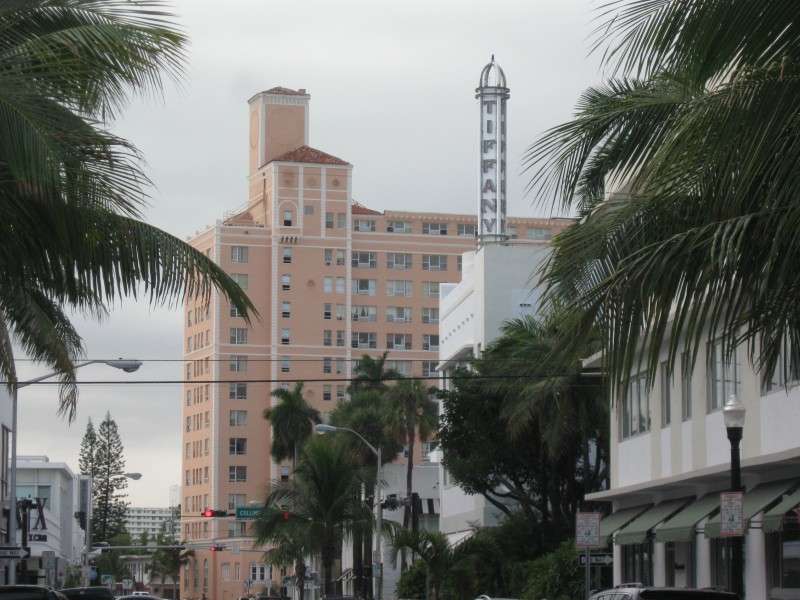
An Art Deco commercial building on Washington Avenue. The structure was built in 1935.

Miami Beach's U.S. Post Office, on Washington Avenue at 13th Street. The post office was built in 1939 in the Depression Moderne style, which was typical of Works Progress Administration projects.
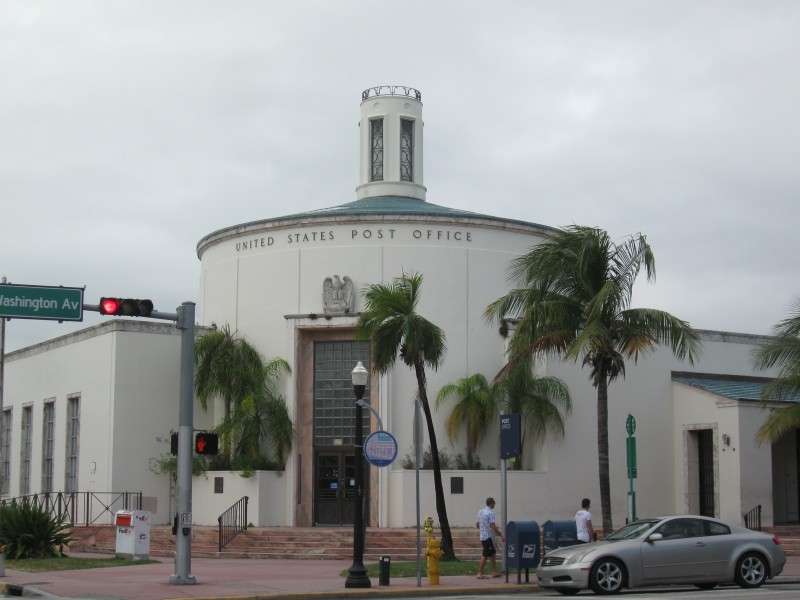
Old City Hall, on Washington Avenue. The neoclassical Mediterranean structure was built in 1927.
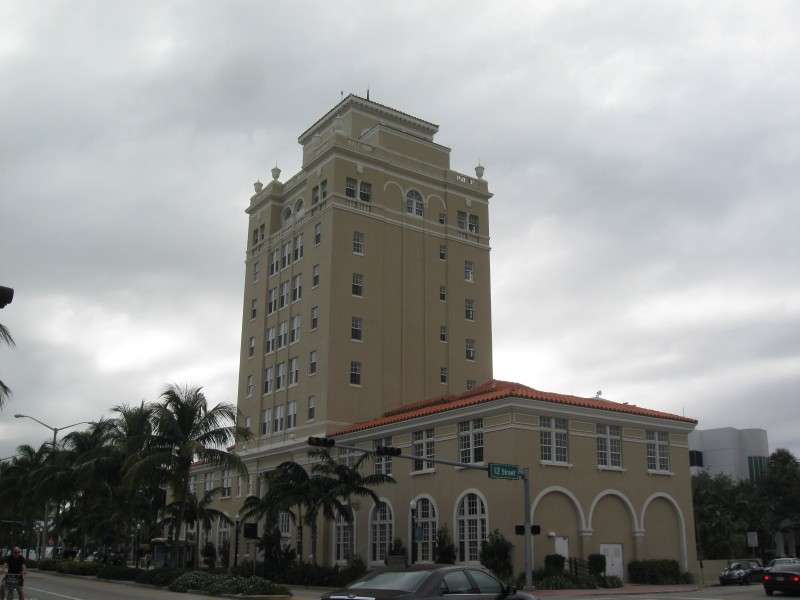
The 30s Promenade, on Washington Avenue. The structure was originally the Cinema Casino, and later a Kress building. It was built in 1935.
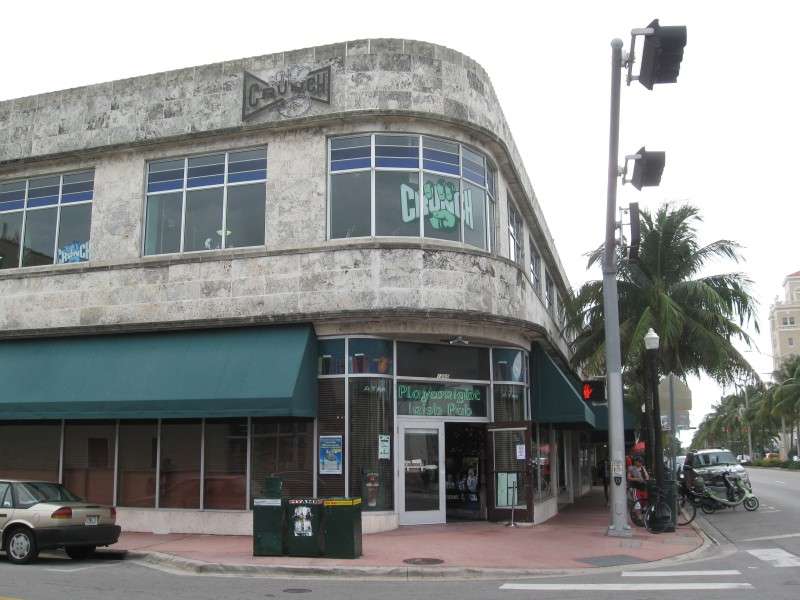
The Cameo Theatre, on Washington Avenue.
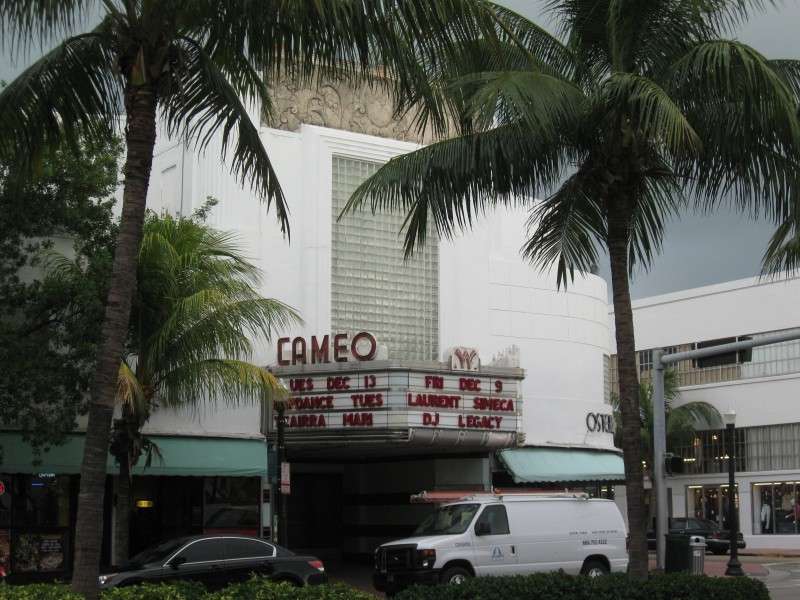
The theater was built in 1938.
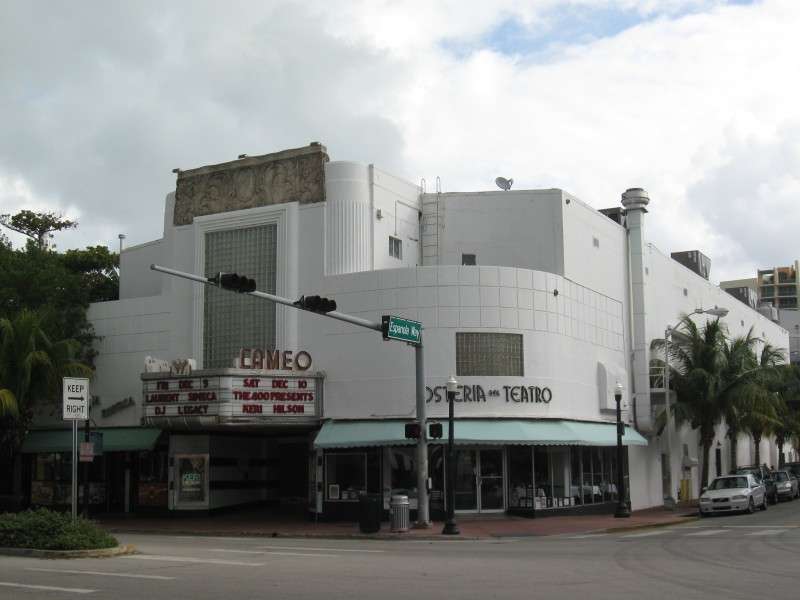
Clay Hotel, at Washington Avenue and Española Way. The Clay Hotel was the centerpiece of development along Española Way.
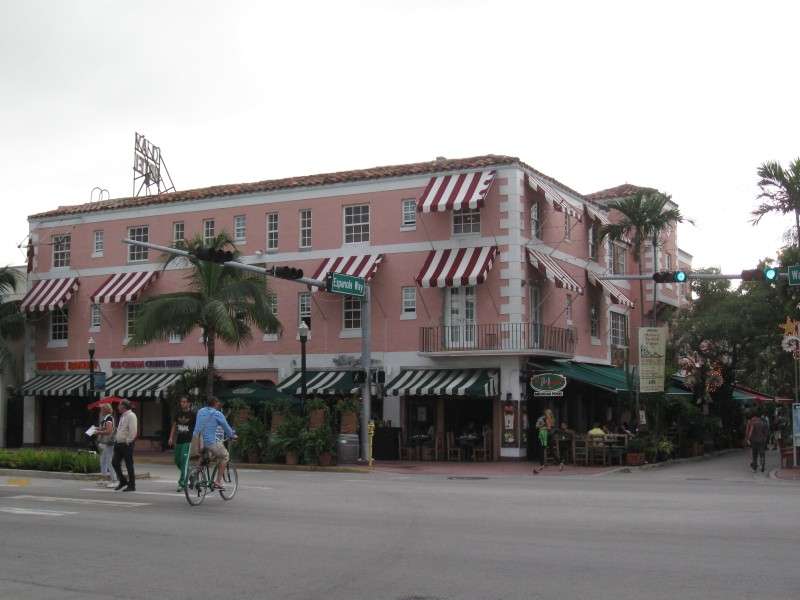
The buildings on Española Way were called the "Spanish Village", with Spanish Revival, Morroccan Revival, as well as Italian Revival, French Revival, and Art Deco architecture mixed in, to create a street scene similar to those in Europe.

The Spanish Village was conceived as an artist's colony, similar to how Greenwich Village in Manhattan and the Latin Quarter in Paris were at the time.

The buildings of the Spanish Village were constructed in 1927, and signaled the beginning of the recovery from the Hurricane of 1926. The Clay Hotel now occupies most of the Spanish Village's upper floors.
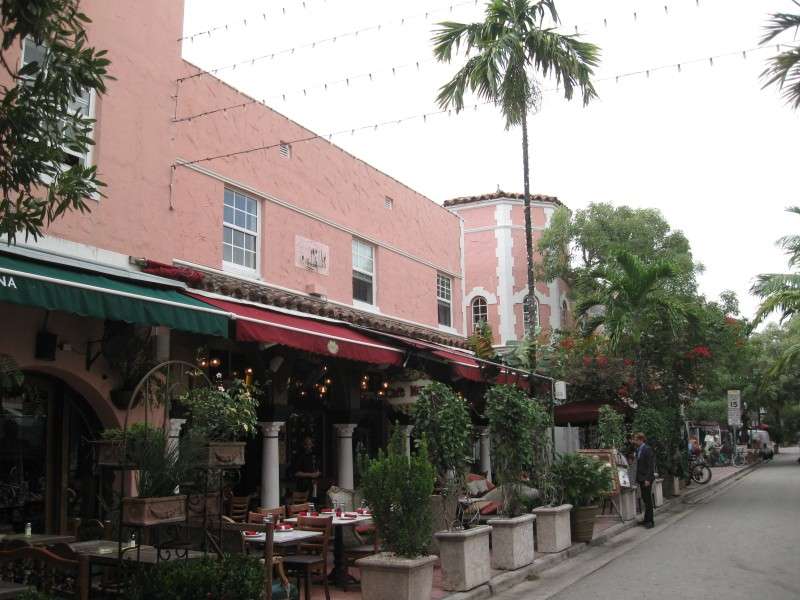
A highrise on Lincoln Road at Washington Avenue. The commercial structure was built in 1955.
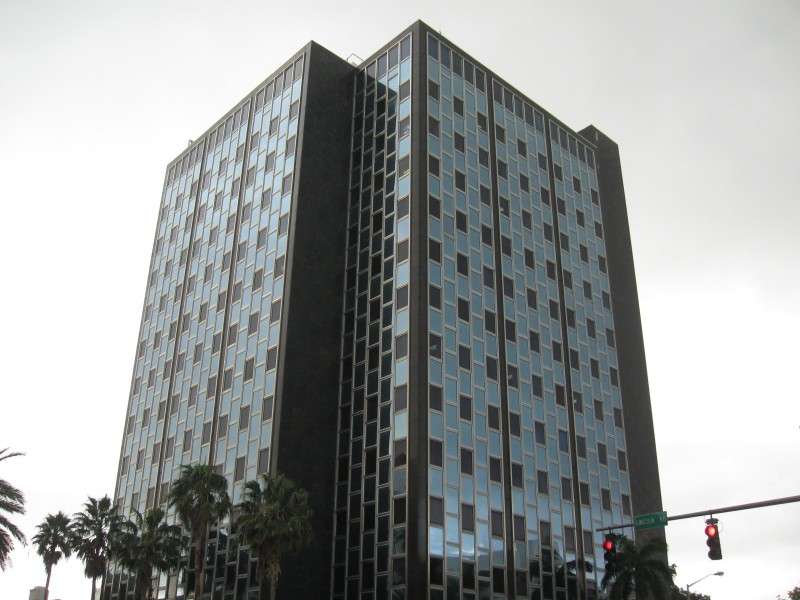
A highrise on Lincoln Road at Pennsylvania Avenue. The structure was built in 1936.

Shops along the Lincoln Road Mall.

The old Van Dyke Hotel, on Lincoln Road at Jefferson Avenue. The hotel was built in 1924 in the Mediterranean Revival style.

The Colony Theater, on the mall portion of Lincoln Road. The theater was built in 1934.
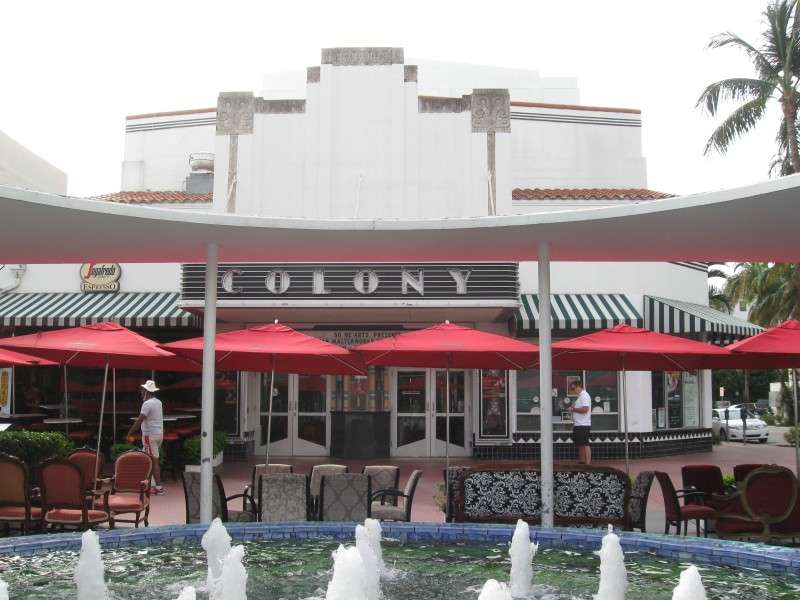
Shops on Lincoln Road Mall. The Mediterranean Revival building was built in 1925.
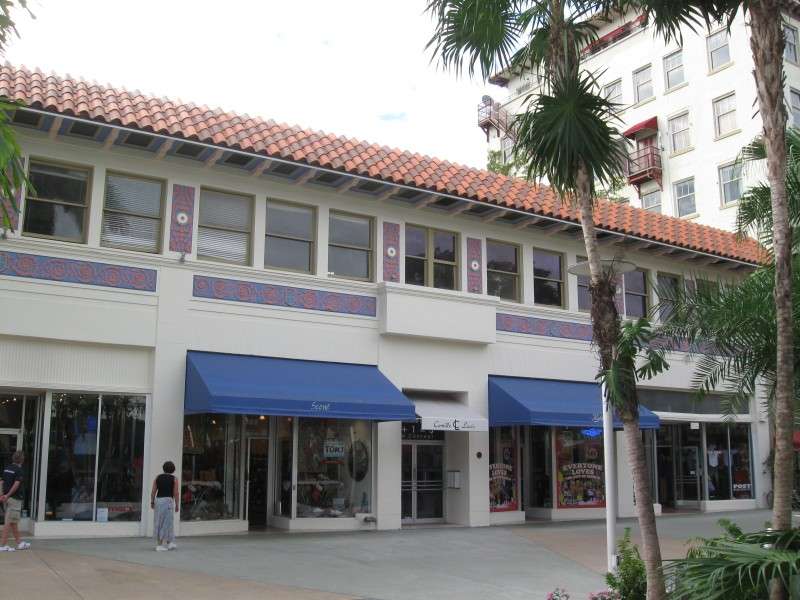
A Guess shop, on Lincoln Road Mall. The store was originally a Cadillac dealership.
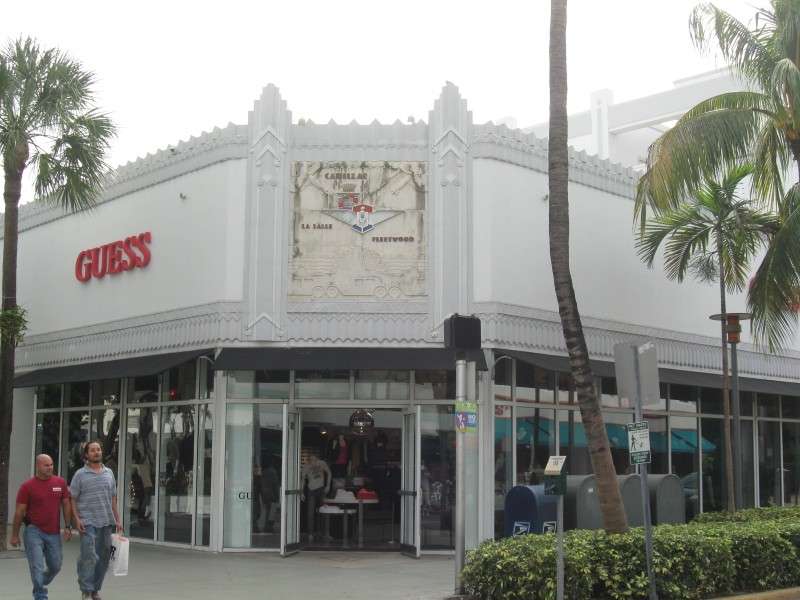
The bas relief from the dealership still remains.

The Lincoln Cinema, on Lincoln Road Mall. The theater was built in 1936.

Miami Beach Community Church, on the Lincoln Road Mall at Drexel Avenue. The church was built in 1921.
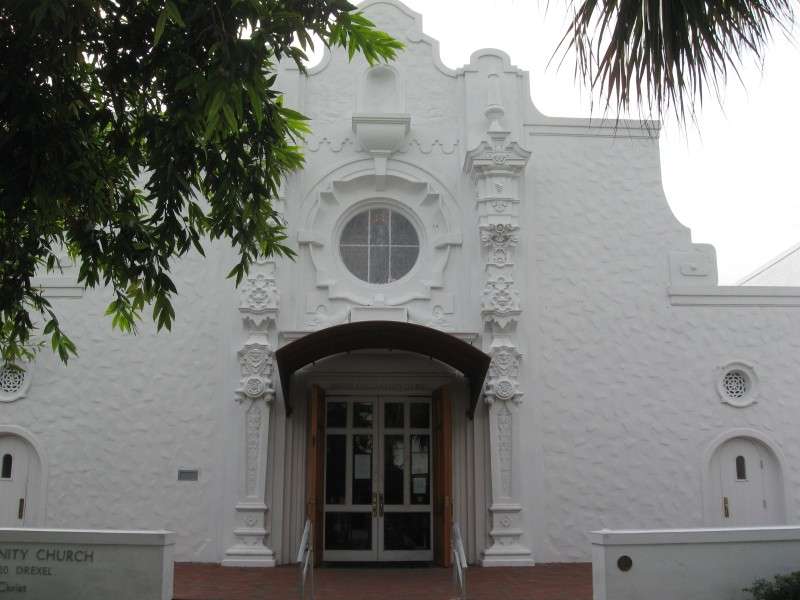
The old Merchants Bank Building, on Lincoln Road where the Lincoln Road Mall meets Washington Avenue. The structure was built in 1941.

The old De Lido Hotel, at Lincoln Road and Collins Avenue. The hotel was built in 1953 and is now the Ritz-Carlton South Beach hotel.
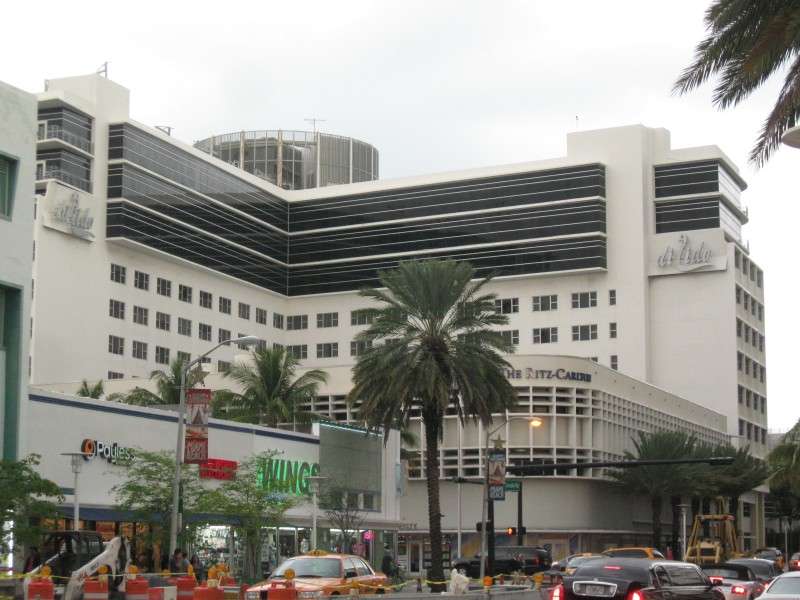
Apartment buildings on Euclid Avenue.

A house on Meridian Avenue.

Flamingo Park Baseball Stadium, on Michigan Avenue. The stadium was built in 1967 on the site of an earlier grandstand.
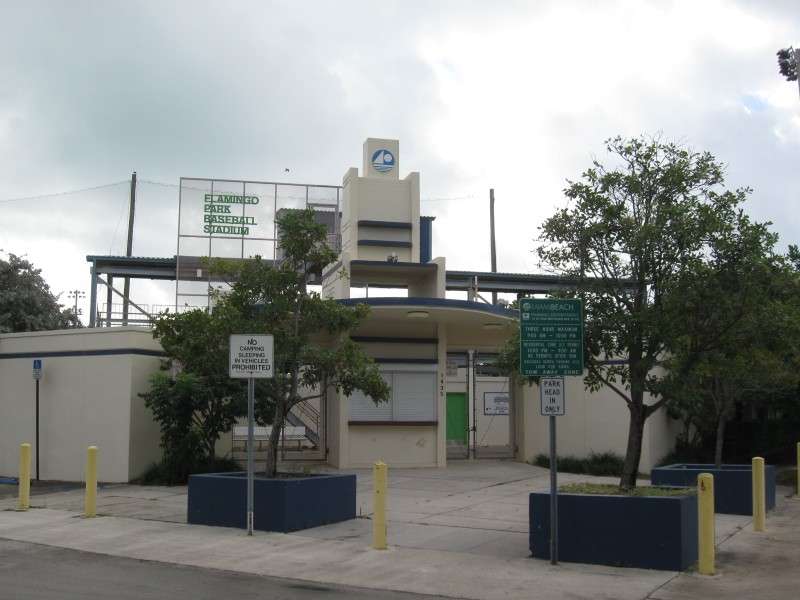
The stadium was home to the Miami Beach Flamingos, who played in the Florida East Coast League from 1940 to 1942, and then played in the Florida International League from 1946 to 1952, and then in 1954.
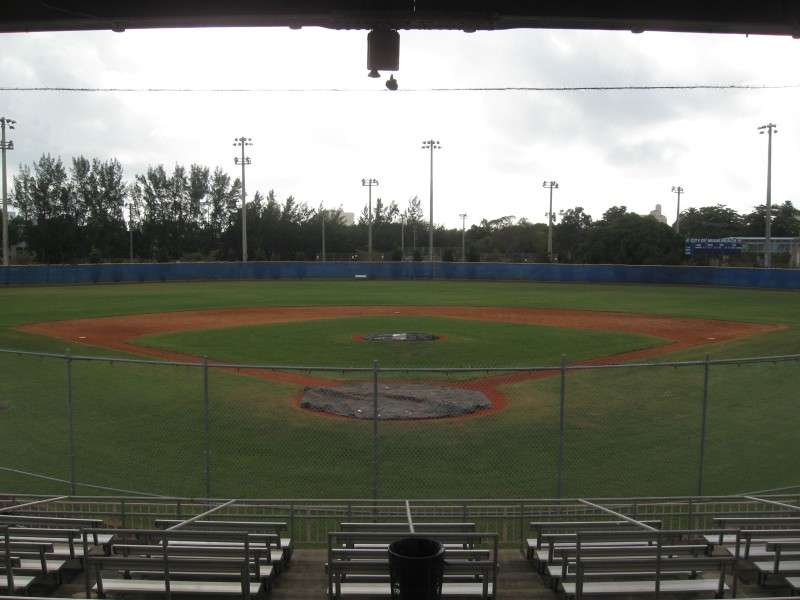
Flamingo Park Baseball Stadium also hosted Spring Training for the New York Giants in 1934 and 1935, the Philadelphia Phillies from 1940 to 1942 and in 1946, and the Pittsburgh Pirates in 1947.
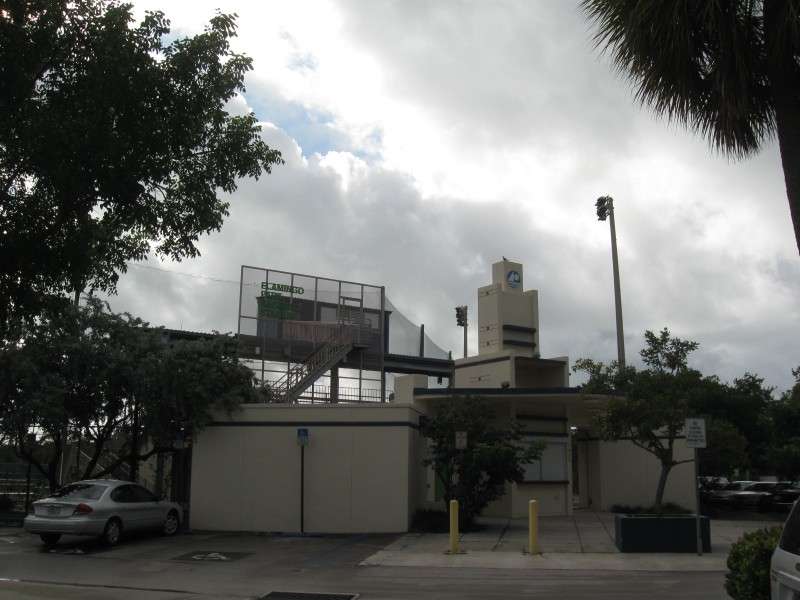
A house on Michigan Avenue.
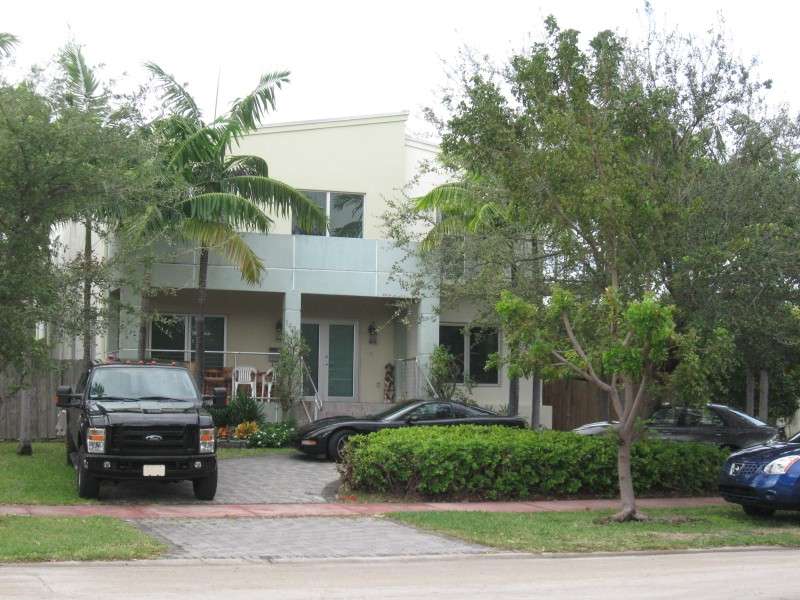
The Delano Apartments, on Pennsylvania Avenue. The structure was built in 1947.

Apartment buildings on Pennsylvania Avenue.
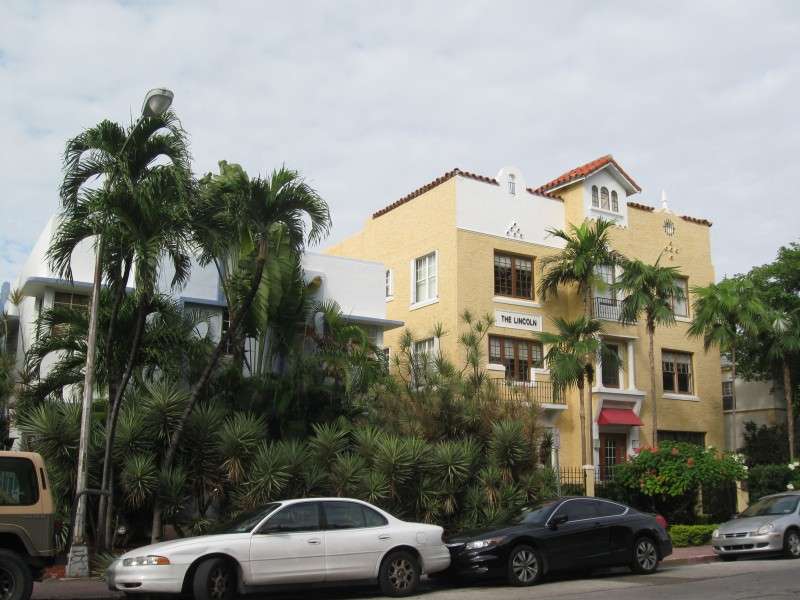
Looking down 16th Street at Loews Miami Beach Hotel. The hotel is comprised of two towers. This tower was built in 1998 and is 272 feet tall. Also part of this complex, but not seen here, is the St. Moritz Tower, built in 1939.
